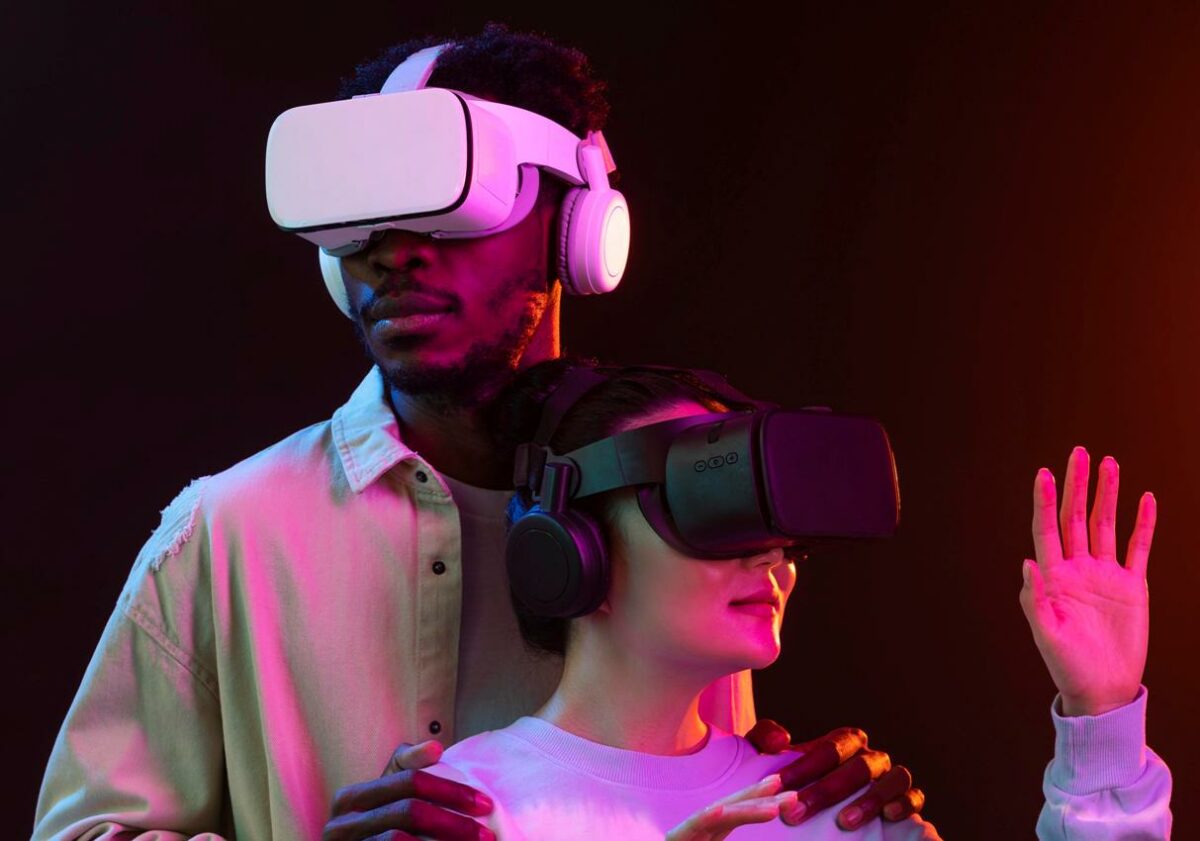In brief, the Metaverse ( “meta” (i.e. beyond) + “verse” (from “universe”)), equipped with AR and VR technologies, encompasses a persistent blend of the digital and the so-to-speak physical worlds, experienced by users in real time.
What is Metaverse?
While numerous experts have their own version of the Metaverse meaning, the key is, it provides or rather embodies somewhat a persistent bridge between the two realities (the digital vs. the physical one).
Even though the term itself isn’t new (and was actually coined back in the 1990s), the popularity of the notion has surged over the past several years, due to the emergence of the more advanced AR and VR tech solutions and the consequently increasing B2C companies’ interest in their adoption.
One of the most vivid examples is, certainly, the online gaming industry, where Fortnite has been hosting global in-game live music events for some time now. And another one are, certainly, the top-tier companies, like Facebook, for instance, which not only offers a variety of VR headsets to consumers, but whose CEO has already announced its future transformation into the Metaverse company.
Benefits of the Metaverse
One of the most obvious benefits of the Metaverse is its being able to unlock people’s access to the new, blended reality, where interoperability and interactivity reach unprecedented levels.
While some experts presume the Metaverse is in many ways a successor of the Internet as we know it, where multiple accounts will deprecate, opening the pathway to the immersive, real-time experience without any walled gardens to millions of users worldwide, it’s still hard to visualize what exactly the real Metaverse will actually be like.
In this respect, one of the noticeable efforts, however, was a short video of what the Metaverse can look like, demonstrated during the Adobe Aero presentation back in 2019.
Roadblocks on the Pathway to Metaverse
First and foremost, one of the hardest challenges yet to overcome is known to be significant hardware limitations. The truth is, most of the current computing and networking functional capabilities can’t support the so-called “persistent mirror world” providing real-time experience to hundreds of thousands of concurrent users.
More importantly, even if such computing and networking capabilities were in place, these would drive excessive energy consumption of such scale, that it would cause huge problems both in terms of power grids maintenance, and the environment protection across the globe.
Another substantial challenge remains the insufficient penetration of AR and VR tech solutions into the global consumer economy. In plain words, even though VR headsets, for example, have been available on the market for several years at least, their adoption even in the developed economies is still lagging behind.
In addition, the current Metaverse precursors aren’t providing genuine interoperability between platforms yet, especially when it comes to user-generated content (UGC).
Perspectives for the Future
Even though it’s still hard to forecast when we’re actually able to switch on the real Metaverse (the truth is: it will never happen by flipping a switch), the gradual evolution of the MR and AR tech, along with their increasingly growing usage by consumers, are the two key driving forces that would fuel the convergence of the global Metaverse in the upcoming years.
